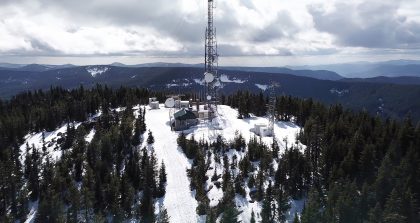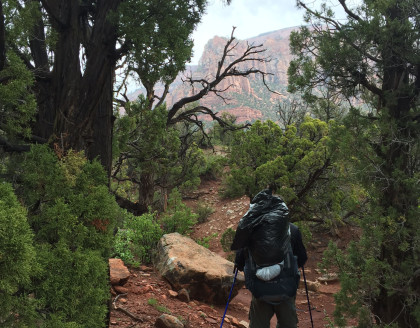What was this place? How did we get there? Keep reading to follow in our footsteps.[/vc_column_text][/vc_column][/mk_page_section][mk_page_section layout_structure=”full” bg_image=”https://wanderlusthiker.com/wp-content/uploads/2015/06/vlcsnap-2015-06-16-17h48m04s11.png” attachment=”scroll” bg_position=”center center” bg_repeat=”repeat” bg_stretch=”true” parallax=”false” parallax_direction=”vertical” bg_video=”no” mask=”true” mask_opacity=”0.6″ expandable=”false” expandable_icon=”mk-theme-icon-plus” expandable_icon_size=”16″ expandable_txt_align=”left” expandable_txt_size=”16″ padding=”20″ full_height=”true” full_width=”true” intro_effect=”false”][vc_column border_color=”” visibility=”” width=”1/3″][mk_icon_text skin=”light” default_txt=”What is it?” default_txt_font_weight=”inherit” font_size=”30″ hover_font_size=”16″ hover_line_height=”18″ hover_txt_font_weight=”inherit” link=”#What_is_it” target=”_self” icon=”mk-theme-icon-accordion” icon_size=”48″][/vc_column][vc_column border_color=”” visibility=”” width=”1/3″][mk_icon_text skin=”light” default_txt=”Where is it?” default_txt_font_weight=”inherit” font_size=”30″ hover_font_size=”16″ hover_line_height=”18″ hover_txt_font_weight=”inherit” link=”#Where_is_it” target=”_self” icon=”mk-icon-map-marker” icon_size=”48″][/vc_column][vc_column border_color=”” visibility=”” width=”1/3″][mk_icon_text skin=”light” default_txt=”How did we do it?” default_txt_font_weight=”inherit” font_size=”30″ hover_font_size=”16″ hover_line_height=”18″ hover_txt_font_weight=”inherit” link=”#How_did_we_do_it” target=”_self” icon=”mk-flaticon-compass39″ icon_size=”48″][/vc_column][/mk_page_section][mk_page_section layout_structure=”full” bg_color=”” bg_image=”” border_color=”” attachment=”scroll” bg_position=”left top” bg_repeat=”repeat” bg_stretch=”false” parallax=”false” parallax_direction=”vertical” bg_video=”no” mp4=”” webm=”” ogv=”” poster_image=”” mask=”false” color_mask=”” mask_opacity=”0.6″ expandable=”false” expandable_txt=”” expandable_image=”” expandable_icon=”mk-theme-icon-plus” expandable_icon_size=”16″ expandable_txt_align=”left” expandable_txt_color=”” expandable_txt_size=”16″ padding=”20″ full_height=”false” full_width=”false” intro_effect=”false” section_id=”” visibility=”” el_class=””][vc_column border_color=”” visibility=”” width=”1/1″][vc_row_inner visibility=””][vc_column_inner el_class=”” width=”1/3″][mk_fancy_title style=”simple” corner_style=”pointed” tag_name=”h3″ border_width=”3″ size=”14″ line_height=”24″ color=”#393836″ font_weight=”inherit” letter_spacing=”0″ font_family=”none” margin_top=”10″ margin_bottom=”10″ align=”left” responsive_align=”center”]
At a glance
[/mk_fancy_title][mk_milestone style=”classic” start=”0″ stop=”38″ speed=”2000″ number_size=”46″ type=”text” icon_size=”16″ text=”Distance (miles)” number_suffix_text_size=”12″ text_size=”12″ color=”#919191″ border_bottom=”#eeeeee”][mk_milestone style=”classic” start=”0″ stop=”2000″ speed=”2000″ number_size=”46″ type=”text” icon_size=”16″ text=”Elevation gain (feet)” number_suffix_text_size=”12″ text_size=”12″ color=”#919191″ border_bottom=”#eeeeee”][mk_milestone style=”classic” start=”0″ stop=”4″ speed=”2000″ number_size=”46″ type=”text” icon_size=”16″ text=”Backpacking time (days)” number_suffix_text_size=”12″ text_size=”12″ color=”#919191″ border_bottom=”#eeeeee”][/vc_column_inner][vc_column_inner el_class=”” width=”1/3″][mk_fancy_title style=”simple” corner_style=”pointed” tag_name=”h3″ border_width=”3″ size=”14″ line_height=”24″ color=”#393836″ font_weight=”inherit” letter_spacing=”0″ font_family=”none” margin_top=”10″ margin_bottom=”10″ align=”left” responsive_align=”center”]Relative difficulty
[/mk_fancy_title][vc_progress_bar values=”75|Beginner|#FAAC58,65|Intermediate|#F4FA58,55|Experienced|#81F79F” bgcolor=”bar_grey” options=”” units=”%”][/vc_column_inner][vc_column_inner el_class=”” width=”1/3″][mk_fancy_title style=”simple” corner_style=”pointed” tag_name=”h3″ border_width=”3″ size=”14″ line_height=”24″ color=”#393836″ font_weight=”inherit” letter_spacing=”0″ font_family=”none” margin_top=”10″ margin_bottom=”10″ align=”left” responsive_align=”center”]When to go
[/mk_fancy_title][vc_progress_bar values=”100|Spring|#81F79F,75|Summer|#F4FA58,75|Fall|#FAAC58,25|Winter|#A9F5F2″ bgcolor=”bar_grey” options=””][/vc_column_inner][/vc_row_inner][vc_raw_html]JTNDaWZyYW1lJTIwaWQlM0QlMjJmb3JlY2FzdF9lbWJlZCUyMiUyMHNyYyUzRCUyMmh0dHAlM0ElMkYlMkZmb3JlY2FzdC5pbyUyRmVtYmVkJTJGJTIzbGF0JTNEMzcuMTgzMiUyNmFtcCUzQmxvbiUzRC0xMTMuMDAzNyUyNmFtcCUzQm5hbWUlM0RTcHJpbmdkYWxlJTJDJTIwVXRhaCUyNmFtcCUzQmNvbG9yJTNEJTIzMDBhYWZmJTIyJTIwd2lkdGglM0QlMjIxMDAlMjUlMjIlMjBoZWlnaHQlM0QlMjIyNDUlMjIlMjBmcmFtZWJvcmRlciUzRCUyMjAlMjIlM0UlMjAlM0MlMkZpZnJhbWUlM0U=
[/vc_raw_html][mk_fancy_title style=”avantgarde” corner_style=”pointed” tag_name=”h3″ border_width=”3″ size=”8″ line_height=”24″ color=”#393836″ font_weight=”inherit” letter_spacing=”0″ font_family=”none” margin_top=”10″ margin_bottom=”10″ align=”center” responsive_align=”center”]ADVERTISEMENTS
[/mk_fancy_title][vc_raw_html]JTNDc2NyaXB0JTIwYXN5bmMlMjBzcmMlM0QlMjIlMkYlMkZwYWdlYWQyLmdvb2dsZXN5bmRpY2F0aW9uLmNvbSUyRnBhZ2VhZCUyRmpzJTJGYWRzYnlnb29nbGUuanMlMjIlM0UlM0MlMkZzY3JpcHQlM0UlMEElM0MlMjEtLSUyMEhvbWUlMjBwYWdlJTIwcmVzcG9uc2l2ZSUyMGFkJTIwLS0lM0UlMEElM0NpbnMlMjBjbGFzcyUzRCUyMmFkc2J5Z29vZ2xlJTIyJTBBJTIwJTIwJTIwJTIwJTIwc3R5bGUlM0QlMjJkaXNwbGF5JTNBYmxvY2slMjIlMEElMjAlMjAlMjAlMjAlMjBkYXRhLWFkLWNsaWVudCUzRCUyMmNhLXB1Yi01NTM4NTAwNTg3MTA4NTQ2JTIyJTBBJTIwJTIwJTIwJTIwJTIwZGF0YS1hZC1zbG90JTNEJTIyMjU5Nzg2MTMxMSUyMiUwQSUyMCUyMCUyMCUyMCUyMGRhdGEtYWQtZm9ybWF0JTNEJTIyYXV0byUyMiUzRSUzQyUyRmlucyUzRSUwQSUzQ3NjcmlwdCUzRSUwQSUyOGFkc2J5Z29vZ2xlJTIwJTNEJTIwd2luZG93LmFkc2J5Z29vZ2xlJTIwJTdDJTdDJTIwJTVCJTVEJTI5LnB1c2glMjglN0IlN0QlMjklM0IlMEElM0MlMkZzY3JpcHQlM0U=
[/vc_raw_html][/vc_column][/mk_page_section][mk_page_section layout_structure=”full” bg_image=”https://wanderlusthiker.com/wp-content/uploads/2015/07/01dd30e69f93030094ccd2b784a75c8b7f39dd22ea.jpg” attachment=”scroll” bg_position=”center bottom” bg_repeat=”no-repeat” bg_stretch=”true” parallax=”false” parallax_direction=”vertical” bg_video=”no” mask=”false” mask_opacity=”0.6″ expandable=”false” expandable_icon=”mk-theme-icon-plus” expandable_icon_size=”16″ expandable_txt_align=”left” expandable_txt_size=”16″ padding=”20″ full_height=”true” full_width=”true” intro_effect=”false”][vc_column border_color=”” visibility=”” width=”1/1″][vc_column_text] [/vc_column_text][/vc_column][/mk_page_section][mk_page_section layout_structure=”full” bg_color=”” bg_image=”” border_color=”” attachment=”scroll” bg_position=”left top” bg_repeat=”repeat” bg_stretch=”false” parallax=”false” parallax_direction=”vertical” bg_video=”no” mp4=”” webm=”” ogv=”” poster_image=”” mask=”false” color_mask=”” mask_opacity=”0.6″ expandable=”false” expandable_txt=”” expandable_image=”” expandable_icon=”mk-theme-icon-plus” expandable_icon_size=”16″ expandable_txt_align=”left” expandable_txt_color=”” expandable_txt_size=”16″ padding=”20″ full_height=”false” full_width=”false” intro_effect=”false” section_id=”” visibility=”” el_class=””][vc_column border_color=”” visibility=”” width=”1/1″][mk_fancy_title style=”simple” corner_style=”pointed” tag_name=”h1″ border_width=”3″ size=”14″ line_height=”24″ color=”#393836″ font_weight=”inherit” letter_spacing=”0″ font_family=”none” margin_top=”10″ margin_bottom=”10″ align=”left” responsive_align=”center”]What is it?
[/mk_fancy_title][vc_column_text responsive_align=”left”]Zion (pronounced [zahy–uh n]) is an immensely scenic and beautiful 229 square mile national park in the southwest corner of Utah. It’s most notable for its massive sandstone canyons that have been eroded by the forces of nature over millions of years. Zion is the post-card perfect image that appears when you envision Utah in your mind’s eye.If that was all that needed to be said though, you would be content with that understanding. Most people aren’t and you shouldn’t be. By May of 2015, over 1 million people had visited the park, and that’s in the first five months of this year alone.
The depth and perspective of the region are an assault on the senses. As a result, the canyons of southwest Utah are a phenomenon that should be experienced first hand.
[mk_image src=”https://wanderlusthiker.com/wp-content/uploads/2015/06/013600edf9b77a806e3c1c0569b7fe06be3756e78b.jpg” image_width=”500″ image_height=”400″ crop=”true” hover=”true” align=”center” margin_bottom=”10″]Let’s be clear, Zion is a backpacker’s Disneyland, and like any trip to the magical kingdoms of this world, special considerations for reservations, park entry fees, and transportation are critical. I recommend absorbing information from the National Park Service guide as part of your Zion 101 course work.
Wanderlusthiker didn’t send us down to Utah to write an article that spits information at you like @GoogleFacts on Twitter, nor would they pay us so handsomely just to give you a handful of links. No, good sir or madam, we are here to share an experience as well as to educate. To truly understand Zion we will arm you with the basics facts and Costco-sized sample cups of our pain.
In Zion, the wild, rugged feeling of the wilderness persists because it’s allowed to. You do not feel encroached on but you will never feel completely alone. There’s a sense of comradery amongst backpackers who, while bonded together through their mutual love of the outdoors in multi-day sprints, simultaneously harbor a sense of loathing for khaki-clad day hikers.
From this perspective, Zion is a trophy; not a wild excursion. Keep reading to find out where you can pick up your own, because everyone’s a winner here even when they aren’t winning.
[mk_image src=”https://wanderlusthiker.com/wp-content/uploads/2015/06/11203102_10205060724171959_8570581677614597102_n.jpg” image_width=”400″ image_height=”500″ crop=”true” hover=”true” align=”center” margin_bottom=”10″][/vc_column_text][/vc_column][/mk_page_section][mk_page_section layout_structure=”full” bg_color=”” bg_image=”” border_color=”” attachment=”scroll” bg_position=”left top” bg_repeat=”repeat” bg_stretch=”false” parallax=”false” parallax_direction=”vertical” bg_video=”no” mp4=”” webm=”” ogv=”” poster_image=”” mask=”false” color_mask=”” mask_opacity=”0.6″ expandable=”false” expandable_txt=”” expandable_image=”” expandable_icon=”mk-theme-icon-plus” expandable_icon_size=”16″ expandable_txt_align=”left” expandable_txt_color=”” expandable_txt_size=”16″ padding=”20″ full_height=”false” full_width=”false” intro_effect=”false” section_id=”” visibility=”” el_class=””][vc_column border_color=”” visibility=”” width=”1/1″][mk_fancy_title style=”simple” corner_style=”pointed” tag_name=”h1″ border_width=”3″ size=”14″ line_height=”24″ color=”#393836″ font_weight=”inherit” letter_spacing=”0″ font_family=”none” margin_top=”10″ margin_bottom=”10″ align=”left” responsive_align=”center”]Where is it?
[/mk_fancy_title][vc_column_text responsive_align=”left”]There are many ways to approach Zion. Most people head directly to Springfield, UT and up through Zion Canyon to the center of the park. This is where the main tourist attractions, museums, lodging, shuttle services, guided tours, and numerous polo/Hawaiian-themed shirts are located.
[/vc_column_text][vc_column_text responsive_align=”center”] [/vc_column_text][mk_fancy_title style=”avantgarde” corner_style=”pointed” tag_name=”h3″ border_width=”3″ border_color=”” size=”8″ line_height=”24″ color=”#393836″ font_weight=”inherit” text_transform=”” letter_spacing=”0″ font_family=”none” font_type=”” margin_top=”10″ margin_bottom=”10″ align=”center” responsive_align=”center” animation=”” el_class=””]ADVERTISEMENTS
[/mk_fancy_title][vc_raw_html]JTNDc2NyaXB0JTIwYXN5bmMlMjBzcmMlM0QlMjIlMkYlMkZwYWdlYWQyLmdvb2dsZXN5bmRpY2F0aW9uLmNvbSUyRnBhZ2VhZCUyRmpzJTJGYWRzYnlnb29nbGUuanMlMjIlM0UlM0MlMkZzY3JpcHQlM0UlMEElM0MlMjEtLSUyMEhvbWUlMjBwYWdlJTIwcmVzcG9uc2l2ZSUyMGFkJTIwLS0lM0UlMEElM0NpbnMlMjBjbGFzcyUzRCUyMmFkc2J5Z29vZ2xlJTIyJTBBJTIwJTIwJTIwJTIwJTIwc3R5bGUlM0QlMjJkaXNwbGF5JTNBYmxvY2slMjIlMEElMjAlMjAlMjAlMjAlMjBkYXRhLWFkLWNsaWVudCUzRCUyMmNhLXB1Yi01NTM4NTAwNTg3MTA4NTQ2JTIyJTBBJTIwJTIwJTIwJTIwJTIwZGF0YS1hZC1zbG90JTNEJTIyMjU5Nzg2MTMxMSUyMiUwQSUyMCUyMCUyMCUyMCUyMGRhdGEtYWQtZm9ybWF0JTNEJTIyYXV0byUyMiUzRSUzQyUyRmlucyUzRSUwQSUzQ3NjcmlwdCUzRSUwQSUyOGFkc2J5Z29vZ2xlJTIwJTNEJTIwd2luZG93LmFkc2J5Z29vZ2xlJTIwJTdDJTdDJTIwJTVCJTVEJTI5LnB1c2glMjglN0IlN0QlMjklM0IlMEElM0MlMkZzY3JpcHQlM0U=
[/vc_raw_html][vc_column_text responsive_align=”left”]Our research suggested that, in order to maximize our exposure to the park, we needed to enter from the northwest entrance via Lee Pass trailhead in the Kolob Canyons region.Springfield is a good start location if you plan on making Zion a day trip. But if you’re like us and want a full backpacking experience, your best bet is to start at either the west or east end of the park.
Since we were driving over a thousand miles in 16 hours from Washington state, the west end made the most logistical sense. So how did we prepare for this trip?
[mk_image src=”https://wanderlusthiker.com/wp-content/uploads/2015/06/010f0ca39ac142a8deca39f9d6de24b731f8863a19.jpg” image_width=”500″ image_height=”400″ crop=”true” hover=”true” align=”center” margin_bottom=”10″] [/vc_column_text][mk_fancy_title style=”simple” corner_style=”pointed” tag_name=”h1″ border_width=”3″ size=”14″ line_height=”24″ color=”#393836″ font_weight=”inherit” letter_spacing=”0″ font_family=”none” margin_top=”10″ margin_bottom=”10″ align=”left” responsive_align=”center”]How did we do it?
[/mk_fancy_title][vc_column_text responsive_align=”left”]Zion is equal parts preparation and follow through. In other words, almost as much time was spent communicating, writing up planning documents, and researching Zion as was spent actually hiking through the park.Defining a route, reserving campsites, calculating daily food rations and water, selecting gear – All of this was important for experiencing Zion safely. The folks at Wanderlusthiker want you to be safe too. That’s why we provided details on each of these items for your eyeballs to skim through.[/vc_column_text][mk_fancy_title style=”simple” corner_style=”pointed” tag_name=”h2″ border_width=”3″ size=”14″ line_height=”24″ color=”#393836″ font_weight=”inherit” letter_spacing=”0″ font_family=”none” margin_top=”10″ margin_bottom=”10″ align=”left” responsive_align=”center”]
Route
[/mk_fancy_title][vc_single_image image=”1261″ alignment=”center” border_color=”grey” img_link_large=”yes” img_link_target=”_self” img_size=”large”][mk_fancy_title style=”avantgarde” corner_style=”pointed” tag_name=”h3″ border_width=”3″ border_color=”” size=”8″ line_height=”24″ color=”#393836″ font_weight=”inherit” text_transform=”” letter_spacing=”0″ font_family=”none” font_type=”” margin_top=”10″ margin_bottom=”10″ align=”center” responsive_align=”center” animation=”” el_class=””]ADVERTISEMENTS
[/mk_fancy_title][vc_raw_html]JTNDc2NyaXB0JTIwYXN5bmMlMjBzcmMlM0QlMjIlMkYlMkZwYWdlYWQyLmdvb2dsZXN5bmRpY2F0aW9uLmNvbSUyRnBhZ2VhZCUyRmpzJTJGYWRzYnlnb29nbGUuanMlMjIlM0UlM0MlMkZzY3JpcHQlM0UlMEElM0MlMjEtLSUyMEhvbWUlMjBwYWdlJTIwcmVzcG9uc2l2ZSUyMGFkJTIwLS0lM0UlMEElM0NpbnMlMjBjbGFzcyUzRCUyMmFkc2J5Z29vZ2xlJTIyJTBBJTIwJTIwJTIwJTIwJTIwc3R5bGUlM0QlMjJkaXNwbGF5JTNBYmxvY2slMjIlMEElMjAlMjAlMjAlMjAlMjBkYXRhLWFkLWNsaWVudCUzRCUyMmNhLXB1Yi01NTM4NTAwNTg3MTA4NTQ2JTIyJTBBJTIwJTIwJTIwJTIwJTIwZGF0YS1hZC1zbG90JTNEJTIyMjU5Nzg2MTMxMSUyMiUwQSUyMCUyMCUyMCUyMCUyMGRhdGEtYWQtZm9ybWF0JTNEJTIyYXV0byUyMiUzRSUzQyUyRmlucyUzRSUwQSUzQ3NjcmlwdCUzRSUwQSUyOGFkc2J5Z29vZ2xlJTIwJTNEJTIwd2luZG93LmFkc2J5Z29vZ2xlJTIwJTdDJTdDJTIwJTVCJTVEJTI5LnB1c2glMjglN0IlN0QlMjklM0IlMEElM0MlMkZzY3JpcHQlM0U=
[/vc_raw_html][vc_column_text responsive_align=”left”]If you can read a treasure map, you should be able to read this map. Print too small to read on your device? A larger copy is available on the National Park Service’s (NPS) website here. However, it won’t have all of our fancy route colors.Yellow lines indicated trail travel distance. Red dots indicate end of day campsite. Blue dots indicate start and finish.[/vc_column_text][mk_fancy_title style=”simple” corner_style=”pointed” tag_name=”h2″ border_width=”3″ size=”14″ line_height=”24″ color=”#393836″ font_weight=”inherit” letter_spacing=”0″ font_family=”none” margin_top=”10″ margin_bottom=”10″ align=”left” responsive_align=”center”]
Food
[/mk_fancy_title][vc_column_text responsive_align=”left”][mk_image src=”https://wanderlusthiker.com/wp-content/uploads/2015/06/013a53c73352530dcb309709f49d0a416b48f9955b.jpg” image_width=”500″ image_height=”400″ crop=”true” hover=”true” align=”center” margin_bottom=”10″]On the subject of food requirements, we’re all the same at a chemical level with a few dietary differences. However, the intense drain that multi-day backpacking trips put on your system requires proper nutrition at levels you may not have previously experienced. This was touched on as an important factor on the Loowit Trail trip.
Backpacking all day can cause the human body to consume upwards of 6,000 calories per day. That’s 250 calories per hour. In other words, you could eat 1 regular sized Snickers bar every hour and still run a calorie deficit.
[mk_image src=”https://wanderlusthiker.com/wp-content/uploads/2015/06/11203102_10205060724171959_8570581677614597102_n_cropped.jpg” image_width=”300″ image_height=”300″ crop=”true” hover=”true” align=”center” margin_bottom=”10″]Eating thousands of calories on a daily basis is challenging when you’re not parked next to a McDonald’s. I tried to select nutrient dense foods that packed the highest number of calories per ounce. Foods like trail mixes, freeze dried meals, granola bars, oat meal, and chocolate. Generally, you’re in good shape if you bring foods that are over the 100 cal/oz threshold.
Unfortunately, several of my favorite foods that contain a lot of protein, like beef jerky, tuna, and protein bars, do not pass the threshold test. It’s also interesting to note that high amounts of protein can actually cause dehydration to occur. No bueno – especially in the scorching, high desert heat.
[mk_image src=”https://wanderlusthiker.com/wp-content/uploads/2015/06/vlcsnap-2015-06-30-17h09m40s49.png” image_width=”100%” image_height=”500″ crop=”true” hover=”true” align=”center” margin_bottom=”10″]The solution: Six 3,000 calorie daily rations, bagged and labeled – Plus a supplemental snacks bag. Special treats included: peanut butter, nutella, vanilla chai latte mix, and tortillas to go with Mountain House wraps freeze dried fajita mix. Delicious.
Unfortunately, this buffet line weighed in at a cringe-worthy 18 pounds. This was overkill. That being said, I would rather have too much food than not enough. It’s difficult to enjoy the scenery when hangriness comes knocking at your stomach’s door.
Eating consistently on the trail helps your body maintain consistent energy levels. I was able to keep a stable pace all day as long as I ate between 150-300 calories per hour. Your body may behave differently depending on its conditioning and base metabolic rate. Tuning in and understanding your body’s requirements is key to assessing how much food to bring on a multi-day backpacking trip.[/vc_column_text][mk_fancy_title style=”simple” corner_style=”pointed” tag_name=”h2″ border_width=”3″ size=”14″ line_height=”24″ color=”#393836″ font_weight=”inherit” letter_spacing=”0″ font_family=”none” margin_top=”10″ margin_bottom=”10″ align=”left” responsive_align=”center”]
Gear
[/mk_fancy_title][vc_single_image image=”1582″ alignment=”center” border_color=”grey” img_link_large=”” img_link_target=”_self” img_size=”large”][vc_column_text responsive_align=”left”]On to the all-important gear that made this backpacker’s trip possible. Detailed descriptions and weights are listed below under the following categories:- Camp gear
- Media gear
- Hygiene gear
- Wearable gear
Note: Some weights were unavailable due lack of manufacturer information.
I’m unable to describe Cheval’s gear since everywhere we went he constructed shelters and tools out of the earth itself. Some say… he was raised by wolves and that his heart pumps pure taurine.[/vc_column_text][mk_fancy_title style=”simple” corner_style=”pointed” tag_name=”h3″ border_width=”3″ size=”14″ line_height=”24″ color=”#393836″ font_weight=”inherit” letter_spacing=”0″ font_family=”none” margin_top=”10″ margin_bottom=”10″ align=”left” responsive_align=”center”]
Camp Gear
[/mk_fancy_title][vc_single_image image=”1284″ alignment=”center” border_color=”grey” img_link_large=”” img_link_target=”_self” img_size=”large”][vc_column_text responsive_align=”left”]| Description | Weight (oz) | Weight (lbs) |
| Osprey 85 Aether Pack | 77 | 4.81 |
| Marmot Earlylight 2P Tent | 76 | 4.75 |
| Slumberjack Ultimate +20 degree | 76 | 4.75 |
| REI Flex Lite chair | 26 | 1.63 |
| Mountainsmith Pinnacle trekking poles | 24 | 1.50 |
| SOG Hand axe | 18.6 | 1.16 |
| Thermarest ProLite 4 Regular self-inflating sleeping pad | 16 | 1.00 |
| Misc – Fire starter kit, knife, pen, pocket notebook, wallet, toilet paper, caribiners | 16 | 1.00 |
| Jetboil Zip Personal Cook System | 12 | 0.75 |
| Coleman Exponent Hand Trowel Shovel | 6 | 0.38 |
| Outdoor Products 2 liter hydration bladder | 6 | 0.38 |
| Adventure Medical Kits UltraLight / Watertight .5 First-Aid Kit | 3.68 | 0.23 |
| Black Diamond ReVolt headlamp | 3.5 | 0.22 |
| Thermarest Stuff Sack Pillow | 2.7 | 0.17 |
| LifeStraw Personal Water Filter | 2 | 0.13 |
| Sea To Summit AlphaLight Long Spoon | 0.4 | 0.03 |
| Total | 365.88 | 22.87 |
Media Gear
[/mk_fancy_title][vc_single_image image=”1277″ alignment=”center” border_color=”grey” img_link_large=”” img_link_target=”_self” img_size=”large”][vc_column_text responsive_align=”left”]| Description | Weight (oz) | Weight (lbs) |
| Albinair 5200 camera tripod | 48 | 3.00 |
| Luxebell 14 in 1 GoPro accessory kit + case (not all accessories packed) | 20 | 1.25 |
| Parrot Bebop drone | 14.1 | 0.88 |
| Goal Zero Solar panel + battery | 11.2 | 0.70 |
| Feiyu G3 Ultra 3-axis gimbal | 10.75 | 0.67 |
| iPhone 6 + case | 5 | 0.31 |
| GoPro Hero4 Silver | 2.1 | 0.13 |
| Wasabi Power Pack – 2 GoPro batteries plus charging kit | 1.6 | 0.10 |
| SanDisk Extreme 32GB microSD card | 0.1 | 0.01 |
| SanDisk Extreme 64GB microSD card | 0.1 | 0.01 |
| Total | 112.95 | 7.06 |
Hygiene Gear
[/mk_fancy_title][vc_single_image image=”1280″ alignment=”center” border_color=”grey” img_link_large=”” img_link_target=”_self” img_size=”large”][vc_column_text responsive_align=”left”]| Description | Weight (oz) | Weight (lbs) |
| Facial Cleansing Wet Towlettes | – | – |
| Tooth brush w/ holder | – | – |
| Mouthwash. 3.2 fl oz | – | – |
| Contact lense case | – | – |
| Contact lense solution 2 fl oz | – | – |
| Tooth paste 0.85 oz | – | – |
| Coleman camp soap sheets | – | – |
| Floss | – | – |
| Glasses | – | – |
| Est. Total | 16 | 1.00 |
Wearable Gear
[/mk_fancy_title][vc_single_image image=”1282″ alignment=”center” border_color=”grey” img_link_large=”” img_link_target=”_self” img_size=”large”][vc_column_text responsive_align=”left” animation=”” visibility=”” el_class=””]| Description | Weight (oz) | Weight (lbs) |
| CIRQ Pax 700 down hooded jacket | – | – |
| CIRQ Fletcher 1/4 zip baselayer top | – | – |
| Outdoor Research non-cotton, breathable, moisture wicking shirt | – | – |
| Champion non-cotton, breathable, moisture wicking shirt | – | – |
| 2 pairs wool socks | – | – |
| Boyscout pants | – | – |
| ExOfficio sport mesh boxer brief | – | – |
| Beanie | – | – |
| American Eagle flip flops | – | – |
| The Tilley Hat | – | – |
| Est. Total | 80 | 5.00 |
Consumables
[/mk_fancy_title][vc_single_image image=”1268″ alignment=”center” border_color=”grey” img_link_large=”” img_link_target=”_self” img_size=”large”][vc_column_text responsive_align=”left”]| Description | Weight (oz) | Weight (lbs) |
| 3.5 liters of water x 2.205 pounds x 16 | 123.48 | 7.72 |
| 6 days of food @ 2.5 lbs per day + 3 pounds snacks = 18 lbs x 16 oz | 288 | 18.00 |
| Est. Total | 411.48 | 25.72 |
At Lee Pass trailhead I shed a few pounds of gear. Notably, the tripod, ax, mini saw, fire starter kit, and a few of the bulkier snack food items. This brought my final pack weight down to around 56 pounds. Nowhere near lightweight, but manageable. I would also be eating my way through a significant portion.[/vc_column_text][/vc_column][/mk_page_section][mk_page_section layout_structure=”full” bg_image=”https://wanderlusthiker.com/wp-content/uploads/2015/09/014aef2bc7b34f00b4e263f067fac95d7683cf2d95.jpg” attachment=”scroll” bg_position=”center center” bg_repeat=”no-repeat” bg_stretch=”true” parallax=”false” parallax_direction=”vertical” bg_video=”no” mask=”false” mask_opacity=”0.6″ expandable=”false” expandable_icon=”mk-theme-icon-plus” expandable_icon_size=”16″ expandable_txt_align=”left” expandable_txt_size=”16″ padding=”20″ full_height=”true” full_width=”true” intro_effect=”false”][vc_column border_color=”” visibility=”” width=”1/1″][vc_column_text responsive_align=”center” animation=”” visibility=”” el_class=””] [/vc_column_text][/vc_column][/mk_page_section][mk_page_section layout_structure=”full” bg_color=”” bg_image=”” border_color=”” attachment=”scroll” bg_position=”left top” bg_repeat=”repeat” bg_stretch=”false” parallax=”false” parallax_direction=”vertical” bg_video=”no” mp4=”” webm=”” ogv=”” poster_image=”” mask=”false” color_mask=”” mask_opacity=”0.6″ expandable=”false” expandable_txt=”” expandable_image=”” expandable_icon=”mk-theme-icon-plus” expandable_icon_size=”16″ expandable_txt_align=”left” expandable_txt_color=”” expandable_txt_size=”16″ padding=”20″ full_height=”false” full_width=”false” intro_effect=”false” section_id=”” visibility=”” el_class=””][vc_column border_color=”” visibility=”” width=”1/1″][mk_fancy_title style=”simple” corner_style=”pointed” tag_name=”h1″ border_width=”3″ size=”14″ line_height=”24″ color=”#393836″ font_weight=”inherit” letter_spacing=”0″ font_family=”none” margin_top=”10″ margin_bottom=”10″ align=”left” responsive_align=”center”]
The Experience
[/mk_fancy_title][vc_column_text responsive_align=”left”]38 miles ago we had set out on a journey to backpack from the west end of Zion National Park to the east entrance 47 miles away. And now here we were: Angel’s Landing, the crown jewel of Zion; the pinnacle, for hikers and backpackers alike, in the midst of so much natural excellence. [mk_image src=”https://wanderlusthiker.com/wp-content/uploads/2015/06/010efc6e62f0e6b2ba3e0d8606c2cee746ed72c0d5.jpg” image_width=”500″ image_height=”400″ crop=”true” hover=”true” align=”right” margin_bottom=”10″]In the heart of Zion we had a decision to make. The weight of my pack was never an issue, surprisingly. In fact, everything was so surreal that freckles of perfection erupted around every bend in the trail and I was thankful that I had the equipment to capture these moments.
No, the decision hinted at something much more exciting – a crossroads, if you will. Would we continue to the remote east entrance of the park or would we leave Utah completely in favor of a northern excursion into the unknown?
As I began to write up this experience I realized that it began to absorb the rest of the article. There’s an explanation of the what, where, and how – which is what this is, but the experience is a story that deserves to stand on it’s own.
Read more:
- Zion: The Experience – Day 1 – Portland to Kolob
- Zion: The Experience – Day 2 – Kolob to Wildcat
- Zion: The Experience – Day 3 – Wildcat to Zion
- Zion: The Experience – Day 4 – Zion to ???
Trail Tips
[/mk_fancy_title][vc_column_text responsive_align=”left”]- Pack light – Additional items might seem necessary, but when you’re actually hiking you’ll want as little in your back as possible.
- Preserve water – Breathing out through the mouth allows additional moisture to escape from your body. Instead, breath out through the nose whenever possible.
- Pace yourself – Quick breaks can go a long way to preserving energy.
- Balance the items in your pack – An unbalanced pack can put extra strain on parts of your body which will take a toll as the miles begin to rack up.
- Protect against sun burn – Bring sunscreen and aloe.
Additional Resources
[/mk_fancy_title][vc_column_text responsive_align=”left”]- Wikipedia – Zion National Park
- National Park Service – Zion
- National Park Service – Zion Park Map
- National Park Service – Zion – West Rim Trail
- SoftSchools.com – Zion National Park Facts
- Zionnational-park.com – Zion – Angel’s Landing
- RockyMountainHikingTrails – Hiking Calorie Calculator
- Joe’s Guide: The Trans-Zion Trek


